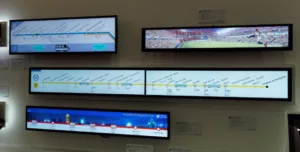Beneq was showing its Lumineq technology which is based on thin film electroluminescence, Last year, the company highlighted that its technology could be embedded between dual glass sheets, making the solution very robust and suitable for a wide range of applications in industrial machinery and rugged transport. Now that it has been showing the technology for a while, projects are starting that put the displays in windshields.
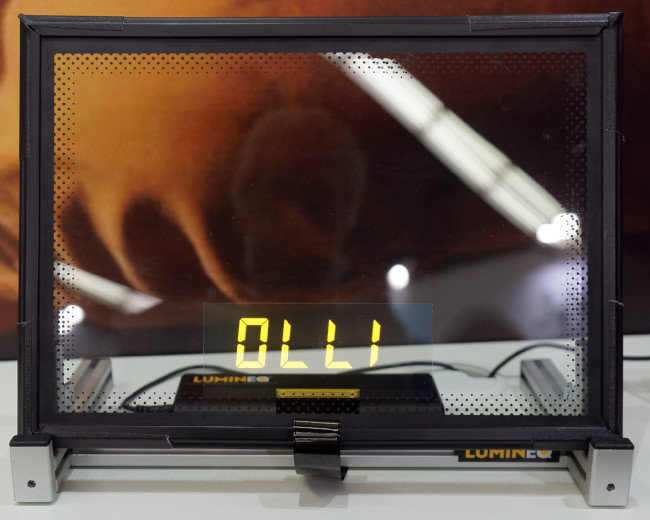 Beneq’s technology is transparent enough for windshields. Image:MekoAs well as the dental system that the firm showed last year, that uses the transparency (Beneq Exploits EL Advantages), the firm is optimistic about sales of a display that combines an analogue, LED-illuminated automotive dial with a superimposed transparent EL display. This is said to be selling well in the automotive aftermarket in Japan.
Beneq’s technology is transparent enough for windshields. Image:MekoAs well as the dental system that the firm showed last year, that uses the transparency (Beneq Exploits EL Advantages), the firm is optimistic about sales of a display that combines an analogue, LED-illuminated automotive dial with a superimposed transparent EL display. This is said to be selling well in the automotive aftermarket in Japan.
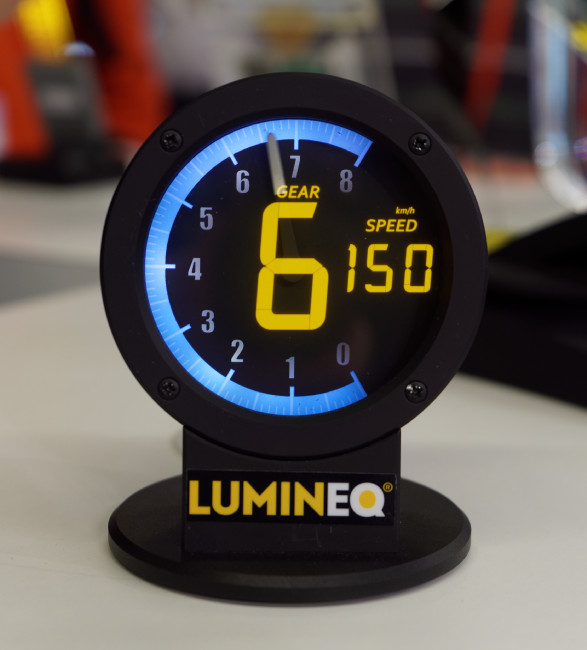 Beneq’s EL is used in this rev counter – a transparent overlay over an analogue dial. Image:Meko
Beneq’s EL is used in this rev counter – a transparent overlay over an analogue dial. Image:Meko
One of the key factors for Beneq is the wide operating conditions and these are from -60º C to +105º (storage). A critical point is that the display operates at very high speed even at the very low temperatures at the bottom of the range, unlike LCD which can slow dramatically. That makes it particularly suitable for safety-critical applications.
Data Modul, was showing the continued development of its portfolio of industrial displays towards 16:9 aspect ratios. Staff highlighted a new Sharp 18.5″ FullHD panel with 400 cd/m² of output and 1,500:1 contrast. Industrial users are still quite conservative and continue to buy 4:3 or 5:4 panels as well as wide format. There was a display of the JDI reflective memory in pixel technology that we reported on in our Electronica report and which is generating interest for mobile and wearable applications. Other highlights included sunlight readable displays from OrtusTech in Japan, that, again, we reported on from Electronica and that are being offered under the BilanView name. Of course, the company highlighted the range of touch and bonded options that it can offer from its dedicated facility in Weikersheim, Germany.
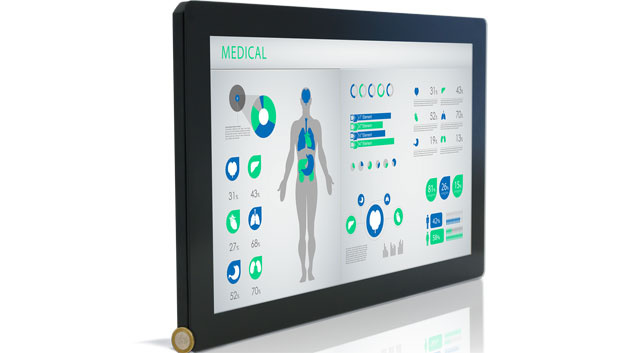 Data Modul Showed the variety of options it can support in Weikersheim. Image:Meko
Data Modul Showed the variety of options it can support in Weikersheim. Image:Meko
Fannal is from near Shanghai in China and specialises in PCap displays that it builds using its own patterned sensors and using a range of different controllers. At the show, it was showing a touch application covered in running water – an impressive performance! The firm specialises in tough conditions and customised solutions and can add features such as anti-glare, anti-reflection and anti-fingerprint coatings as well as optical bonding. It makes sizes in PCap up to 32″ and can offer one touch operation through glass up to 10mm or for use with thick industrial gloves.
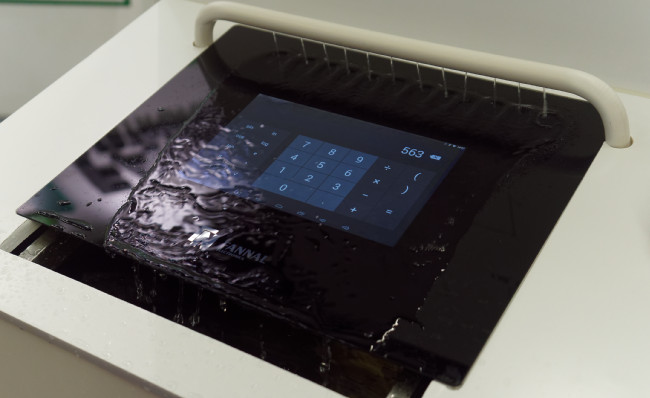 Fannal’s Touch system works when the display is very wet. Image:Meko
Fannal’s Touch system works when the display is very wet. Image:Meko
Inova Semiconductors said that it has developed a new high speed mezzanine card for Intel Cyclone V FPGA boards that can be used to support the APix2 automotive video interface. APIX2 is Inova’s SerDes (serializer/deserializer) technology for video and data communication in vehicles. It provides high-speed differential data transmission over a quad twisted pair (QSTP) cable, with bandwidth up to 3Gbps. APIX2 is the second generation of the Automotive Pixel Link (APIX) standard, and is intended for for automotive display and camera applications.
The APix2 High Speed Mezzanine Card can simultaneously stream multiple digital video signals, as well as 100 Mbps bidirectional Ethernet data traffic and SPI control data, over robust APix cable connections into and out of a FPGA.
- The two on-board Inova INAP375RAQ receiver devices accept video streams with resolutions of up 1600 x 600 pixels and refresh rates of up to 100Hz. Their flexible video interface is configurable to handle one or two independent video streams each, which gives a total of up to four video input streams.
- The on-board Inova INAP375TAQ transmitter can send 18- or 24-bit video with a resolution of up to 1600 x 600 pixels, 24-bit color depth and refresh rates of up to 100Hz to a display using the OpenLDI digital video interface.
- The card’s RJ45 10/100 Ethernet port enables it to send and receive data traffic over the APix2 link of the transmitter and receiver #1, via a Media Independent Interface (MII). It can also be used to send IP video traffic over the APix2 links.
- In camera applications, the cameras can be powered remotely through Power over APix (PoA) using the card’s power regulator.

